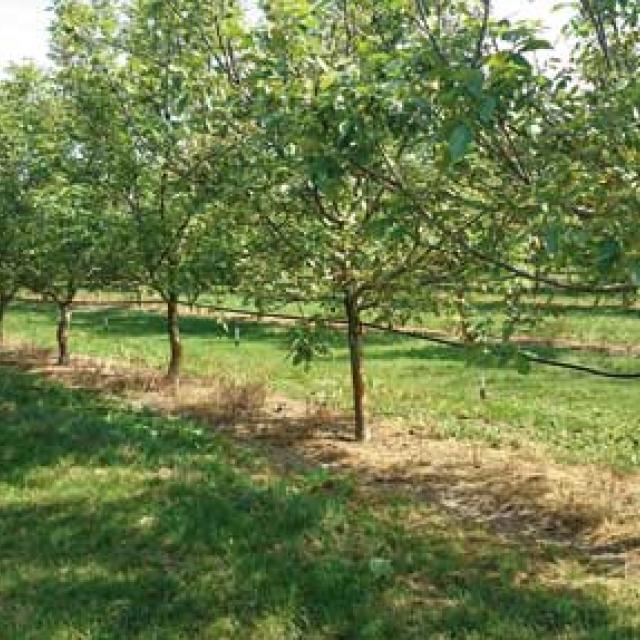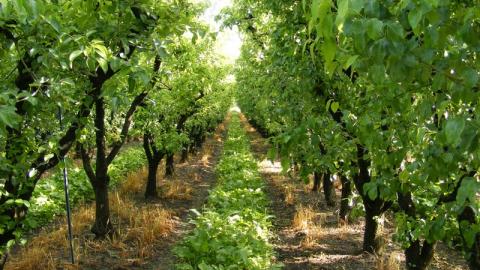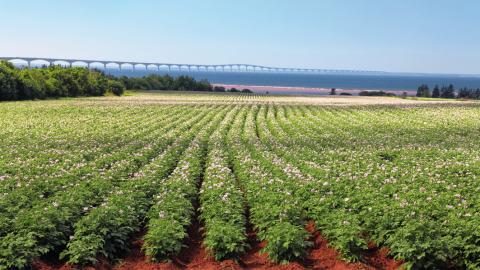Over the years, agriculture has been changing and advancing with innovative technology. In recent years, we have seen changes in weather, resulting from global warming. Another change is globalization, which has opened up new markets to a wide range of agricultural produce, but has also intensified competition between countries and between growers.

Alongside the challenges that have always existed, such as pests or drought, today growers are facing new agricultural challenges. One of the greatest challenges is the increasingly unpredictable and extreme climate resulting from global warming. Countries are subjected to extreme heat and cold and to unseasonal weather, which destroys entire crops. Moreover, due to the global water crisis which has been intensifying since the 1970s, entire agricultural crops are lost because of the shortage of water reserves.
Another hardship in agriculture is the shortage of manual labor. Nowadays, the supply of agricultural workers is very limited and is made up mainly of migrant workers. The limited labor force and the consequent high cost of employing agricultural workers result in higher crop prices around the world, as well as difficulty in monitoring and controlling the large growing areas.
This is a well-established fact. Another known fact is that irrigation systems are contributing to agricultural cultivation and yields more than ever before.
As part of the evolution of technological progress, advanced water distribution and management means were introduced: sprinklers, drippers, and micro-sprinklers. Drip irrigation is a major factor in the pressure irrigation market. In many cases, sprinkler irrigation —and micro-sprinkler irrigation in particular —has a clear advantage over any other irrigation method, with added value for irrigation in orchards.
Different kinds of micro-sprinklers
Micro-irrigation offers a rich and diverse range of solutions that can be adapted specifically to each crop and to all climates and growing conditions. In addition to the accepted practice in the irrigation market regarding the installation of under-tree micro-sprinklers, today's micro-sprinklers are suspended on PE laterals installed in the foliage along the row at a height of 100 cm. These laterals are used to suspend micro-sprinklers on a 30-cm stabilizer unit (or longer, depending on the conditions), maintaining the micro-sprinkler at least 60 cm above the ground (also taking into account the specific conditions in the orchard). One or two micro-sprinklers are installed between every two trees, depending on the distance between the trees. This method is used when blowers are used to harvest the fruit, including macadamia and crops with foliage similar to grapevines, like kiwi.
The micro-sprinkler has a wide flow range—from 12 l/h to 300 l/h—and spreaders and swivels with different types of distribution patterns, regulated and unregulated, which facilitate adaptation to suit the specific needs of each crop. There are two types of micro-sprinklers: static and dynamic.
The static sprinklers have different distribution patterns: full-circle, half-circle, 3000 sector and other sectors that are used to keep the tree trunk dry. The water is dispersed by jets, and the water volume of each jet is the flow of the mini-sprinkler divided by the number of jets.
The micro-sprinklers have a dynamic swivel, which usually rotates at a speed of 3,000 rpm and disperses the water in a full circle. The rotation speed produces various drop sizes, which together create uniform wetting that is easily absorbed into the soil, and yet more wind-resistant. There are different types of swivels that allow growers to select the optimal solution for each type of crop or planting method. The flow rate and operation time are calculated according to the evapotranspiration of the crop, the wetting radius of the sprinkler and other factors, including the species and the radius of the root zone. For example, when overlapping between sprinklers is not required, it is recommended to use micro-sprinklers with a shoulder pattern that supplies a uniform sprinkler rate at each point around the tree. In the irrigation of citrus, a bell pattern with a 3-meter wetting radius is required to obtain a uniform wetting line along the row.
There are other types of swivels, and it is always best to consult with a professional before choosing the most suitable irrigation product. Over the years, a very wide range of water distribution patterns have been developed to produce the required results.
Advantages of Micro-Sprinklers
Fertigation by means of micro-sprinklers has several advantages:
• Size of wetting area: One sprinkler has a wetting capacity with a radius of less than one meter to several meters. This allows the wetting of a considerable area with a clear advantage for the crop.
• Precision and adaptation of the irrigated area: Today, micro-sprinklers and sprayers are able to produce a distribution pattern that can be adapted to almost any requirement. A wide range of geometric shapes provide a specific solution for every situation. A micro-sprinkler can even be installed close to the tree trunk, without wetting the trunk yet irrigating the area around it.
• Increased use of mechanization: Agricultural mechanization is constantly developing and progressing, providing solutions for orchard operations that are more mechanical. The water dispersion and installation of sprinklers between the trees allows obstacle-free movement and routine operation of equipment.
• Suspension: In some methods, the lateral is suspended above the ground and the sprinkler is connected onto the lateral at the required spacing and height, thus preventing damage caused by animals while benefitting from effective wetting and a microclimate effect.
• Wide range of flow rates: Today, micro-sprinklers and sprayers have flow rates ranging from tens of liters per hour up to hundreds of liters per hour. This wide range allows for a precise solution adapted to each and every situation: different crops, soils, climates, and hydraulic requirements or restrictions.
• Microclimate: Unlike drip irrigation, water distribution methods such as sprinkler or mini-sprinkler systems, whether in orchards or open fields, have a focused effect on the plant environment. These effects include humidity, cooling by evaporation, frost protection by latent heat, and fogging. In extreme climates, this can be crucial for the survival of the crop.
• Leaching: As mentioned previously, the micro-sprinkler has a wide range of flow rates, all of which are higher than those of a dripline. As a result, it is easy to flush the soil relatively quickly and to leach salts.
• Integration and decomposition of organic matter: The sprinkler is positioned above the surface; therefore, water will always be delivered from above and with a wide distribution. This contributes to the optimal decomposition of the organic matter on the ground, which is one of the reasons why micro-sprinkler irrigation is the preferred method in organic agriculture.
• Shortening the duration of irrigation: Due to the relatively high flow rates, the water volume required for an orchard can be delivered in a relatively short time, providing substantial operational advantages.
• Frost protection: Although previously mentioned, it’s worth emphasizing that in many places around the world, under-tree sprinklers are used for frost protection in orchards where temperatures may drop below zero.
• Highly improved wetting uniformity: It’s important to note that uniform wetting can be achieved by any irrigation method, including dripline. However, in order to achieve full wetting with dripline, the system is required to operate for a long time. The point near the dripper continues to receive water continuously, while water has not yet reached the most distant point of the required wetting area. In other words, each point of the wetted area receives a different water volume and at a different irrigation interval. This is not the case with sprinklers: each point in the irrigated area receives exactly the same amount of water at exactly the same time.
• Unique advantage in wetting a shallow and wide soil profile: This advantage is related to the previous one. Sometimes a particularly shallow soil profile needs to be wetted, which is difficult, even impossible, with drip irrigation. But it can be easily achieved with sprinklers, while preventing the waste of precious water and nutrients. An example is in technical irrigation: If the grower wants to apply pesticide or deliver a nutrient, but a very small irrigation volume is required, sprinklers can be used to cover a wide area in a short time and with a minimum volume of water. Using the micro-sprinkler method, the applied substances also reach the roots more effectively than with dripline or flood irrigation systems.
• Crops with shallow roots: As a result of what was mentioned above, there is a great advantage to sprinkler irrigation in crops with a shallow and wide root system, such as avocados, bananas, nuts, and palm oil—some of the world’s most important crops.
• Ideal for bananas and palm oil: These intensive tropical crops are most sensitive to lack of consistent rainfall. Micro-sprinklers compensate for this, thus providing the greatest benefit for these strategic crops.
• Advantages in sandy, light or rocky soils: In sandy soil, the irrigation regime should be adapted because the water distribution in such soil conditions is completely different from the water distribution in heavy soil. The features of the micro-sprinkler make it the ideal choice for irrigation in sandy soils. The uniformity, high flow rates, wetting profile, and wide wetting radius allow for the required wetting conditions to be maintained in each area.
• Lower filtration requirements provide a financial advantage: Due to the relatively wide sprinkler nozzle, there is less sensitivity to clogging and less filtration is required. This principle is very cost-effective and requires a lower initial investment in the irrigation system, as well as low maintenance of filters.
Advantages of Micro-sprinklers for both Large- and Small-scale Farms
Every tree is an independent physical and physiological unit, affected by geo-climatic and other conditions. Whether there is an intensive orchard system with thousands of trees or a small plot with different species, the grower is required to nurture and care for the individual tree and for the entire plantation. When planning for optimal irrigation (Fertigation), the following parameters and restrictions should be taken into account in each unit, however large and small it may be: water volume and quality, type of soil, climate, operational or hydraulic restrictions, automation, and stress points in the growing cycles.
Small- and Medium-Scale Orchards, Based on Organic or Semi-Organic Agriculture
In most organic crops, it is customary to spread compost, humus, manure or any other authorized matter that has nutritional and other benefits for the orchard. In this case, the use of drip irrigation is problematic. The organic matter is spread often, covering the irrigation equipment installed on the surface and burying it deeper with each application. This prevents water from reaching the surface from the early stage of the orchard.
Consequently, sprinkler irrigation is the best choice in organic agriculture. A micro-sprinkler irrigation system allows growers to spread compost as much and as often as they like. The sprinkler always remains above the surface and optimizes the organic matter in the same way as rain. Overhead wetting buries the nutrients in the soil and, at the same time, allows for more efficient decomposition of the organic matter itself.
In crops with lush vegetative growth, such as banana, avocado and nuts (macadamia and cashew), there is a significant volume of fallen leaves and plant matter on the ground. In mature banana plantations irrigated with dripline, movement in the plantation becomes a real challenge due to the large volume of leaves, twigs and other plant matter on the ground. In plots irrigated with sprinklers, there is very little plant matter on the ground. As a result, work in the orchard is more efficient, but more importantly, all the organic matter is decomposed and recycled as fertilizer in the orchard. This improves the functioning of the orchard, enhances the soil, nourishes the plants, and ultimately saves a lot of money and labor.
Fertilization by Manual Spreading of Soluble, Granular, or Urea Fertilizer
In some countries, fertilizer is not applied through the existing irrigation system; manual application or basic mechanized application of soluble fertilizer on the soil near the trees is preferred.
In this case, the micro-sprinkler and sprayer systems contribute significantly to burying the nutrients– dissolving the fertilizer and pushing it deep into the root zone. Relying on rain for that purpose might result in uncontrolled water volume that may flush the fertilizer deep under the root zone.
During seasons when the orchard is dependent on the irrigation system as the sole water source, all system components should be checked to ensure that they are functioning properly. Herein lies another advantage to micro-sprinklers. It is easy to identify a malfunctioning sprinkler. The fallen leaves and plant matter do not cover the irrigation system, so it is visible. With dripline, it is not always possible to detect a blocked dripper because in certain conditions, the dripline itself cannot be seen. Unfortunately, what often happens in young orchards is that a problem in the dripline system is detected too late—when the tree has already died. In such orchards with sandy soils, a clogged dripper can result in the death of a tree before the problem is identified. This can be avoided with sprinkler irrigation.
Another example is in banana plantations. In most countries, bananas are irrigated with sprinklers. However, there are a few places in which growers insist on using drip irrigation for their banana plantations. In these places, as the banana seedlings grow, the drip laterals are sometimes trapped between two banana trunks and water passage is obstructed. These growers only manage to identify the problem after entire rows of their plantation have completely dried out. This problem can be prevented by using sprinkler irrigation.
There are additional advantages for large plantations. In these plantations, the operational requirements increase the need for micro-sprinkler irrigation, which greatly contributes to operation and work between the long rows and assists in mechanical harvesting. For example, in nut orchards the entire area is wetted to prevent cracking of the soil and the loss of some of the yield, which may fall into the cracks. Irrigation of the right soil profile prevents this cracking and allows for the quick and continuous work of the harvester in orchards. The same applies to the supervision of irrigation and prevention of damage caused by animals.
What is the future of agriculture and the company’s role in creating irrigation solutions? NaanDanJain believes the future of agriculture lies in technology—a concept known as Ag Tech.



